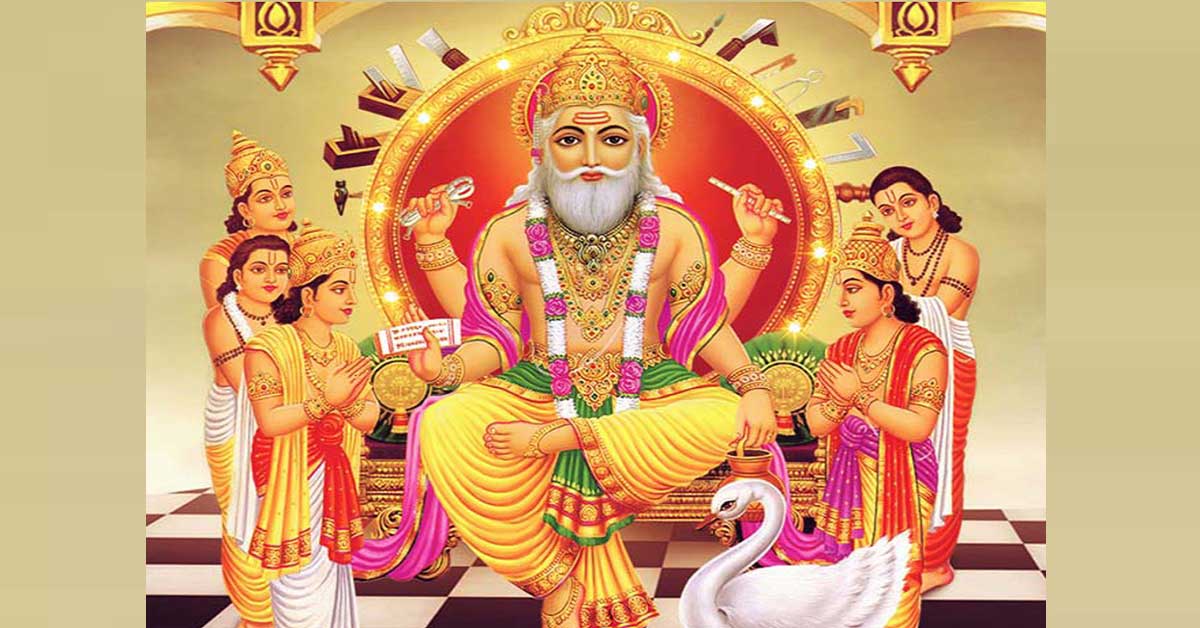
Celebrating Vishwakarma Puja: A Blend of Faith and Craftsmanship in Nepal
Vishwakarma Day, also known as Sankranti in Kaligad, is an esteemed festival that celebrates the divine architect Vishwakarma. It's a day when factories come alive with ritualistic worship, not just in Kaligad but across Nepal. More than just a religious event, this day epitomizes the rich cultural fabric of the region and pays homage to artisans and the art of architecture.
Vishwakarma Puja is a grand festival celebrated with enthusiasm across Nepal, particularly in industrial areas and by artisans. The day is dedicated to Lord Vishwakarma, considered the divine architect and craftsman in Hindu mythology. This guide aims to give you insights into the significance, rituals, and the vibrant celebrations of this remarkable festival. It serves as a comprehensive resource for those who wish to understand or celebrate Vishwakarma Puja.
Rituals and Celebrations
-
Idol Worship: The day usually begins with the ceremonial installation of a Vishwakarma idol, often made of sand. This idol is later taken to sacred locations like the Bagmati source site in Sundarijal for a cleansing ritual and eventually washed away.
-
Factory Decoration: Factories are adorned with festive decorations, where workers are actively involved in the celebration.
-
Tool Blessings: Artisans also worship their tools, following the religious belief that these tools will then last longer, perform better, and aid in the accomplishment of good deeds.
-
Health Protocols: Given the ongoing risk of COVID-19 and its variants, special attention is paid to ensure that health guidelines are strictly followed during the festivities.
The Significance of Vishwakarma Puja
- Divine Origin: Lord Vishwakarma is believed to be the divine craftsman who created the world.
- Architect of Gods: He is the official builder of all the gods' palaces and their weapons, including the iconic Sudarshana Chakra of Lord Vishnu.
- Craftsmanship: The day is a celebration of craftsmanship, engineering, and skill.
Rituals and Customs
- Installation of Idol: A clay or metal idol of Lord Vishwakarma is installed in factories and workshops.
- Puja Ceremony: Priests perform rituals, and devotees offer flowers, sweets, and decorative items.
- Tool Blessing: It is customary to place tools and machinery in front of the idol for blessings, ensuring a prosperous year ahead.
How to Celebrate
- Decorations: Factories and workshops are cleaned and decorated.
- Community Feasts: Meals are usually community-driven, strengthening the bond among workers.
- Cultural Events: Folk dances, songs, and dramas make the celebration lively and engaging.
Why You Should Participate
- Skill Honoring: It’s a unique festival that honors your skills and craftsmanship.
- Unity: It brings people of different crafts and skills together.
- Spiritual Satisfaction: The rituals and hymns create a spiritual environment that many find uplifting.
The Legend of Vishwakarma and Bet Dwarka
Vishwakarma is not just revered for his architectural prowess but is also deeply ingrained in religious folklore. According to tradition, he built 'Bet Dwarka' in the middle of the sea in just one night after Lord Krishna was afflicted by a demon. Situated in Gujarat, India, 'Bet Dwarka' still stands as a testament to Vishwakarma's remarkable skill.
Vishwakarma: The Guardian Deity
Vishwakarma is also esteemed as one of the four guardian deities of ancient India, specifically guarding the west. His influence extends beyond Nepal, with 'Bet Dwarka' considered a marvel still nestled in the middle of the sea in Gujarat, India.
Vishwakarma's Influence on Modern Architecture in Nepal
Today, artisans in Nepal pay grand homage to Vishwakarma, respecting his vast knowledge and wisdom. It's a popular belief that by doing so, they imbibe some of his virtuous qualities. Some even go the extra mile by conducting worship rituals in vehicles with engines.
Vastu Day: Another Layer of Celebration
In addition to Vishwakarma Day, architects celebrate this day as Vastu Day, in remembrance of the author and scholar of the book Vastu Shastra—a foundational text on architecture.
Renaissance of Architecture in Nepal
Nepal is currently witnessing a resurgence in architecture, grounded in the ancient architectural Vedas mentioned in one of the four sub-Vedas. More people are building homes and cities based on these long-forgotten texts, signaling a revival in traditional craftsmanship.
Conclusion
Vishwakarma Day is much more than just a religious observance. It's a celebration of art, craftsmanship, and architectural ingenuity that has stood the test of time. Amidst the blend of faith and craftsmanship, the festival serves as a reminder of the rich cultural and religious tapestry that defines Nepal.
Embrace the divine architect in you this Vishwakarma Day, as we uphold traditions, celebrate skill, and inspire future generations.
Festival




